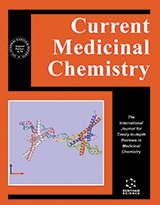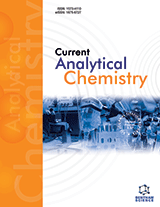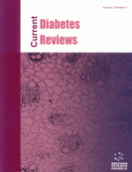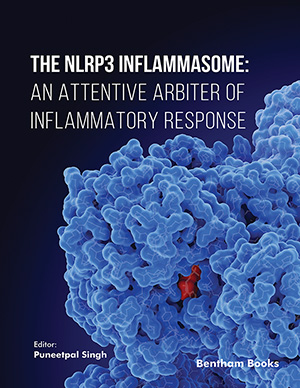Abstract
The term Lewy body diseases (LBDs) refers to a subset of neurodegenerative disorders that share the accumulation of the so-called Lewy bodies (LB) including: Parkinson’s disease (PD), dementia with Lewy bodies (DLB), and PD later characterized by the occurrence of dementia (PDD). Moreover, multiple system atrophy (MSA) and idiopatic Rem Sleeping behaviour disorders (RBD) complete the group of synucleinopathies and have also common symptoms with respect to LBDs. The clinical diagnosis of LBDs can be challenging for physicians, particularly in the early stages of disease. Given the growing number of individuals affected by these neurodegenerative disorders, early and accurate diagnosis can lead to improved clinical management of patients. For this reason, information obtained from molecular imaging biomarkers is playing an increasingly important role in this framework. The present narrative review discusses both established milestones and new evidence on the use of molecular imaging tracers already part of the clinical practice as well as available evidence on new molecular imaging approaches in PD, PDD and DLB.
Keywords: Parkinson disease, lewy bodies dementia, Parkinson disease dementia, molecular imaging, positron emission tomography, single photon emission tomography.
Current Medicinal Chemistry
Title:New Tracers and New Perspectives for Molecular Imaging in Lewy Body Diseases
Volume: 25 Issue: 26
Author(s): Matteo Bauckneht, Dario Arnaldi, Flavio Nobili, Dag Aarsland and Silvia Morbelli*
Affiliation:
- Nuclear Medicine Unit, Department of Health Sciences, Policlinic San Martino Hospital, 16132 Genoa,Italy
Keywords: Parkinson disease, lewy bodies dementia, Parkinson disease dementia, molecular imaging, positron emission tomography, single photon emission tomography.
Abstract: The term Lewy body diseases (LBDs) refers to a subset of neurodegenerative disorders that share the accumulation of the so-called Lewy bodies (LB) including: Parkinson’s disease (PD), dementia with Lewy bodies (DLB), and PD later characterized by the occurrence of dementia (PDD). Moreover, multiple system atrophy (MSA) and idiopatic Rem Sleeping behaviour disorders (RBD) complete the group of synucleinopathies and have also common symptoms with respect to LBDs. The clinical diagnosis of LBDs can be challenging for physicians, particularly in the early stages of disease. Given the growing number of individuals affected by these neurodegenerative disorders, early and accurate diagnosis can lead to improved clinical management of patients. For this reason, information obtained from molecular imaging biomarkers is playing an increasingly important role in this framework. The present narrative review discusses both established milestones and new evidence on the use of molecular imaging tracers already part of the clinical practice as well as available evidence on new molecular imaging approaches in PD, PDD and DLB.
Export Options
About this article
Cite this article as:
Bauckneht Matteo, Arnaldi Dario, Nobili Flavio, Aarsland Dag and Morbelli Silvia*, New Tracers and New Perspectives for Molecular Imaging in Lewy Body Diseases, Current Medicinal Chemistry 2018; 25 (26) . https://dx.doi.org/10.2174/0929867324666170609080000
| DOI https://dx.doi.org/10.2174/0929867324666170609080000 |
Print ISSN 0929-8673 |
| Publisher Name Bentham Science Publisher |
Online ISSN 1875-533X |
Call for Papers in Thematic Issues
Advances in Medicinal Chemistry: From Cancer to Chronic Diseases.
The broad spectrum of the issue will provide a comprehensive overview of emerging trends, novel therapeutic interventions, and translational insights that impact modern medicine. The primary focus will be diseases of global concern, including cancer, chronic pain, metabolic disorders, and autoimmune conditions, providing a broad overview of the advancements in ...read more
Approaches to the treatment of chronic inflammation
Chronic inflammation is a hallmark of numerous diseases, significantly impacting global health. Although chronic inflammation is a hot topic, not much has been written about approaches to its treatment. This thematic issue aims to showcase the latest advancements in chronic inflammation treatment and foster discussion on future directions in this ...read more
Cellular and Molecular Mechanisms of Non-Infectious Inflammatory Diseases: Focus on Clinical Implications
The Special Issue covers the results of the studies on cellular and molecular mechanisms of non-infectious inflammatory diseases, in particular, autoimmune rheumatic diseases, atherosclerotic cardiovascular disease and other age-related disorders such as type II diabetes, cancer, neurodegenerative disorders, etc. Review and research articles as well as methodology papers that summarize ...read more
Chalcogen-modified nucleic acid analogues
Chalcogen-modified nucleosides, nucleotides and oligonucleotides have been of great interest to scientific research for many years. The replacement of oxygen in the nucleobase, sugar or phosphate backbone by chalcogen atoms (sulfur, selenium, tellurium) gives these biomolecules unique properties resulting from their altered physical and chemical properties. The continuing interest in ...read more
 53
53 5
5 2
2 2
2
- Author Guidelines
- Graphical Abstracts
- Fabricating and Stating False Information
- Research Misconduct
- Post Publication Discussions and Corrections
- Publishing Ethics and Rectitude
- Increase Visibility of Your Article
- Archiving Policies
- Peer Review Workflow
- Order Your Article Before Print
- Promote Your Article
- Manuscript Transfer Facility
- Editorial Policies
- Allegations from Whistleblowers
- Announcements
Related Articles
-
Effect of Aglycon and Glycoside Flavonoid-Enriched Extracts Obtained from Buxus sempervirens L. on Glucose and Lipid Metabolism in Diabetic Rats
Cardiovascular & Hematological Agents in Medicinal Chemistry New Insights on the Mode of Action of Microcystins in Animal Cells - A Review
Mini-Reviews in Medicinal Chemistry Defects in RNA Metabolism links FTD and ALS Pathogenesis: TDP-43, FUS, and C9orf72
Current Enzyme Inhibition The Association Between Alcohol Use and the Progression of Alzheimer’s Disease
Current Alzheimer Research Default Mode Network Connectivity and Related White Matter Disruption in Type 2 Diabetes Mellitus Patients Concurrent with Amnestic Mild Cognitive Impairment
Current Alzheimer Research Shutting Down the Furnace: Preferential Killing of Cancer Cells with Mitochondrial-Targeting Molecules
Current Medicinal Chemistry Potential Role of Rho Kinase Inhibitors in Combating Diabetes-Related Complications Including Diabetic Neuropathy-A Review
Current Diabetes Reviews Nanomedicine and its Potential for the Treatment of Alzheimer’s Disease
Current Nanomedicine Anorexia Nervosa and the Use of Total Parenteral Nutrition Refeeding
Current Nutrition & Food Science SiRNA Nanotherapeutics _The Panacea of Diseases?
Current Gene Therapy Insulin Resistance as Common Molecular Denominator Linking Obesity to Alzheimer’s Disease
Current Alzheimer Research Recent Updates in the Alzheimer’s Disease Etiopathology and Possible Treatment Approaches: A Narrative Review of Current Clinical Trials
Current Molecular Pharmacology Treatment of Choroidal Neovascularization in High Myopia
Current Drug Targets Targeted Hydrolysis of Beta-Amyloid with Engineered Antibody Fragments
Current Alzheimer Research Therapeutic Approaches for the Management of Sleep Disorders in Geriatric Population
Current Medicinal Chemistry History of Autoimmune Pancreatitis and Mikuliczs Disease
Current Immunology Reviews (Discontinued) Myostatin Inhibition and Cardiometabolic Disorders
Immunology, Endocrine & Metabolic Agents in Medicinal Chemistry (Discontinued) Mutant Cell Surface Receptors as Targets for Individualized Cancer Diagnosis and Therapy
Current Cancer Drug Targets Gene Transfer to the Central Nervous System: Current State of the Art of the Viral Vectors
Current Genomics Transplantation of Stem Cells as a Potential Therapeutic Strategy in Neurodegenerative Disorders
Current Stem Cell Research & Therapy


























